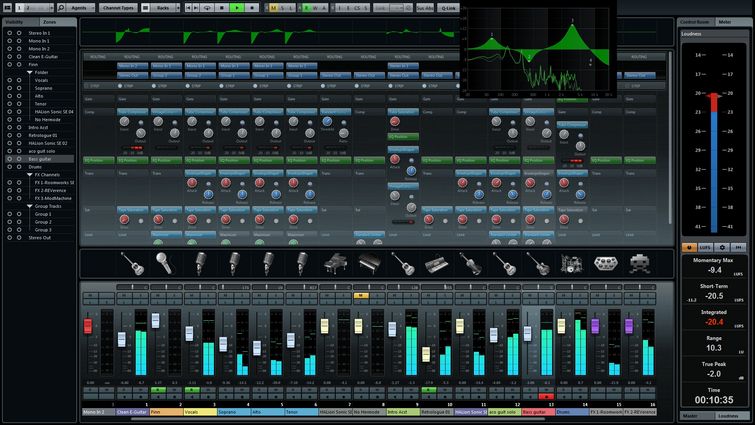

Plugins being resized are up to the developer of the plugins. If a plugin does not show up check cubase's blacklist in \Users~username~\AppData\Roaming\Steinberg~Cubaseversion~ (You can skip all of them and it will be fine however, they just get blacklisted in whatever other daw) If you ever want to use another daw, and point to that folder you'll get alot of errors since those cant be used in any other programs. You'll probably want to put any third party plugins in a folder seperate from \Program Files\Steinberg\Cubase\VSTPlugins - (I put mine in \Program Files\VSTPlugins) as thats where cubase installs its native plugins.
Cubase 7 vst bridge 64 Bit#
personally I've weened myself off of non 64 bit developers. The cubase 32/64bit bridge is garbage, but there's a commercial alternative in JBridge. (not in C8 though, where its under plugin manager) you can add as many locations as you want.

VST2 locations are defined in devices->plugin information. This really is ideal as you really can create a totally custom view of your mix and slim down even complex projects.Vst3 are installed in \program files\common files\vst3 by system default - and they are. This area allows you to show or hide any channel in your project individually. The Channel selector is probably the first area you'll see as it is open by default and appears on the left-hand side of the Console. They all do similar jobs but have varying levels of control. This is achieved by using either the Channel Selector, Window Layout or Channel Type windows. On top of this scalability, you can actually choose to hide and reveal specific functions and channels within your active project. You can also use the standard Cubase zoom functions to open up the size of the faders and meters themselves. We've already seen that you can drag window sizes and this works for each area of the console. Realistically, there are three or four ways of altering what is shown in the MixConsole at any one time. If you find that you want to customize the way your console looks even further, you can use other features to show and hide specific elements in your mix. This is a really refreshing approach and should really be standard in all DAWs moving forward. Making the console window narrower or shorter simply resizes the majority of the data, menus and buttons, while the faders and meters can be zoomed and stretched to any size you like.
Cubase 7 vst bridge pro#
This was actually written on a MacBook Pro and although I have used Cubase 7 on a desktop setup, I was more than happy with the way the MixConsole adapted to the smaller screen.Ī mix stretched and zoomed to fit into a smaller area. This is especially useful if you are working on a single screen or laptop-based setup. This is the first DAW mixer that I've used that uses this feature and it enables you to stretch the whole mix window to any shape you like and retain the majority of viewable info. The first thing I want to touch on is the MixConsole's scalability. Granted, you can see the meters, faders and some plug-in info but there is much more on offer here. When you first open the MixConsole in its default view, you may notice that there is not a huge amount of information on show.
Cubase 7 vst bridge skin#
These skin deep alterations to the interface are just the tip of the iceberg, so let's delve a little deeper. As soon as I opened a project in the new version I found it easier to navigate to specific instruments in the mix.Ĭoloring, naming and applying notes to each channel remains the same and these characteristics will be loaded from projects created in earlier versions of Cubase.

The faders and meters now have a serious hardware look, and some simple but effective color coding makes the different fader types stand out immediately. The brand new MixConsole in default view.


 0 kommentar(er)
0 kommentar(er)
